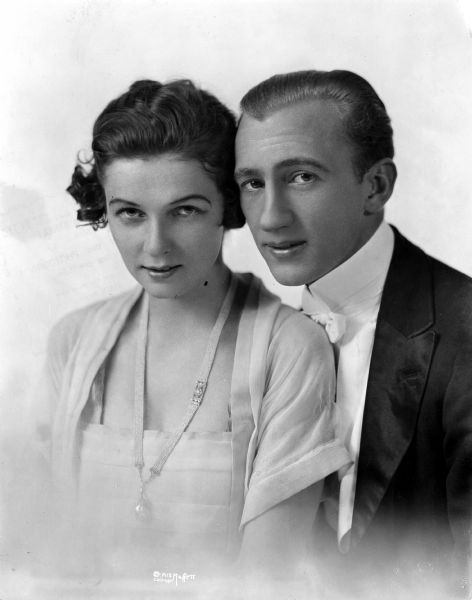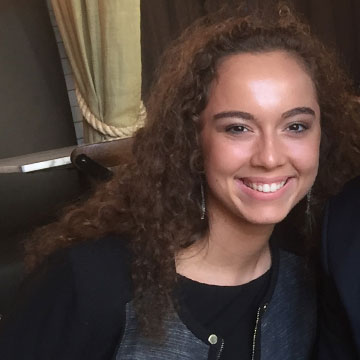Vernon and Irene Castle
See also: Categories: Legends, History, Ballroom,DanceSport
Definition
Overview
Castle was a stage name: Vernon (2 May 1887 – 15 February 1918) was born William Vernon Blyth in Norwich, Norfolk, England. Irene (17 April 1893 – 25 January 1969) was born Irene Foote in New Rochelle, New York.The couple reached the peak of their popularity in Irving Berlin's first Broadway show, Watch Your Step (1914), in which they refined and popularized the Foxtrot. They also helped to promote ragtime, jazz rhythms and African-American music for dance. Irene became a fashion icon through her appearances on stage and in early movies, and both Castles were in demand as teachers and writers on dance.
After serving with distinction as a pilot in the British Royal Flying Corps during World War I, Vernon died in a plane crash on a flight training base in Texas in 1918. Irene continued to perform solo in Broadway, vaudeville and motion picture productions over the next decade. She remarried three times, had children and became an animal-rights activist. In 1939, her life with Vernon was dramatized in The Story of Vernon and Irene Castle.
Rise to fame
Vernon, the son of a publican, was raised in Norwich, England initially training to become a civil engineer. He moved to New York in 1906 with his sister, Coralie Blythe, and her husband Lawrence Grossmith, both established actors. There he was given a small part on stage by Lew Fields, which led to further acting work, and he became established as a comic actor, singer, dancer and conjuror, under the stage name Vernon Castle.Irene, the daughter of a prominent physician, studied dancing and performed in several amateur theatricals before meeting Vernon Castle at the New Rochelle Rowing Club in 1910. With his help, she was hired for her first professional job, a small dancing part in "The Summer Widowers". The next year, over her father’s objections, the two were married. The English-born Vernon had already established himself as a dancer in comedic roles. His specialty was playing a gentleman drunk, who elegantly fell about the stage while trying to hide his condition.
After their marriage, Irene joined Vernon in The Hen-Pecks (1911), a production in which he was a featured player. The two then traveled together to Paris to perform in a dance revue. The show closed quickly, but the couple was then hired as a dance act by the Café de Paris. They performed the latest American ragtime dances, such as the Turkey Trot and the Grizzly Bear. The Castles were soon the rage of Parisian society; their success was widely reported in the United States, preparing their way for a triumphant return to New York in 1912.
When they returned to the U.S., their success was repeated on a far wider scale. Making their New York debut in 1912 at a branch of the Cafe de Paris operated by Louis Martin, who had given them their start in Paris, the duo were soon in demand on stage, in vaudeville and in motion pictures. They also became staples of Broadway. Among their shows were The Sunshine Girl (1913) and Watch Your Step (1914), which boasted Irving Berlin's first score, written for the Castles.[2] In this extravaganza, the couple refined and popularized the Foxtrot. After its New York run, Watch Your Step toured through 1916.
In 1914, the couple opened a dancing school in New York called "Castle House", a nightclub called "Castles by the Sea" on the Boardwalk in Long Beach, New York, and a restaurant, "Sans Souci". At Castle House, they taught New York society the latest dance steps, by day, and greeted guests and performed at their club and cafe at night. They also were in demand for private lessons and appearances at fashionable parties. Despite their fame, they often found themselves treated as hired menials; if a rich client was too demanding, Vernon would quote a fee of a thousand dollars an hour for lessons and often get it.
Life without Vernon
On May 3, 1919, Irene remarried the scion of a prominent Ithaca, New York family, Robert E. Treman. They resided in Ithaca's newly-cut Cayuga Heights subdivision, north of Cornell University. Irene starred solo in about a dozen silent films between 1917 and 1924, including Patria (1917), and appeared in several more stage productions before retiring from show business. Treman reportedly invested Castle's money and lost it in the stock market. They divorced in 1923. She married two more times; the same year, she married Frederic McLaughlin (a man 16 years her elder), and two years after he died in 1944, she married George Enzinger (d. 1959), an advertising executive from Chicago. During her marriage to "Major" McLaughlin, who was the owner of the Chicago Blackhawks, she is credited with designing the original sweater for the Blackhawks Hockey Club. She had two children with McLaughlin, Barbara McLaughlin Kreutz (1925–2003), who was Dean of the Graduate School of Arts and Sciences at Bryn Mawr College, and William McLaughlin (1929–2012).Mostly retired from dancing after William's birth in 1929, Castle concentrated on animal rights activism.[18] Around 1930, "the best-dressed woman in America" presented serialized, quarter-hour radio dramatizations of her European travels with her husband, bulldog Zowie, and Walter ("father's coloured servant") around the capitals of Europe in "The Life of Irene Castle". Only one episode is known to exist.
In 1939, the Castles' life was turned into a movie, The Story of Vernon and Irene Castle, produced by RKO and starring Fred Astaire and Ginger Rogers. Edna May Oliver played their agent, and Lew Fields was his 33 years younger self. Irene Castle served as a technical advisor on the film, but clashed with Rogers, who refused to wear Castle's trademark short bob or darken her hair.[20] She objected to Rogers' inauthentic wardrobe demands, although a number of Castle's original Lucile gowns were copied for the movie. Castle also protested the hiring of white actor Walter Brennan to play their faithful friend and manservant Walter, who was black
Photo Gallery





_NRFPT_01.jpg)



